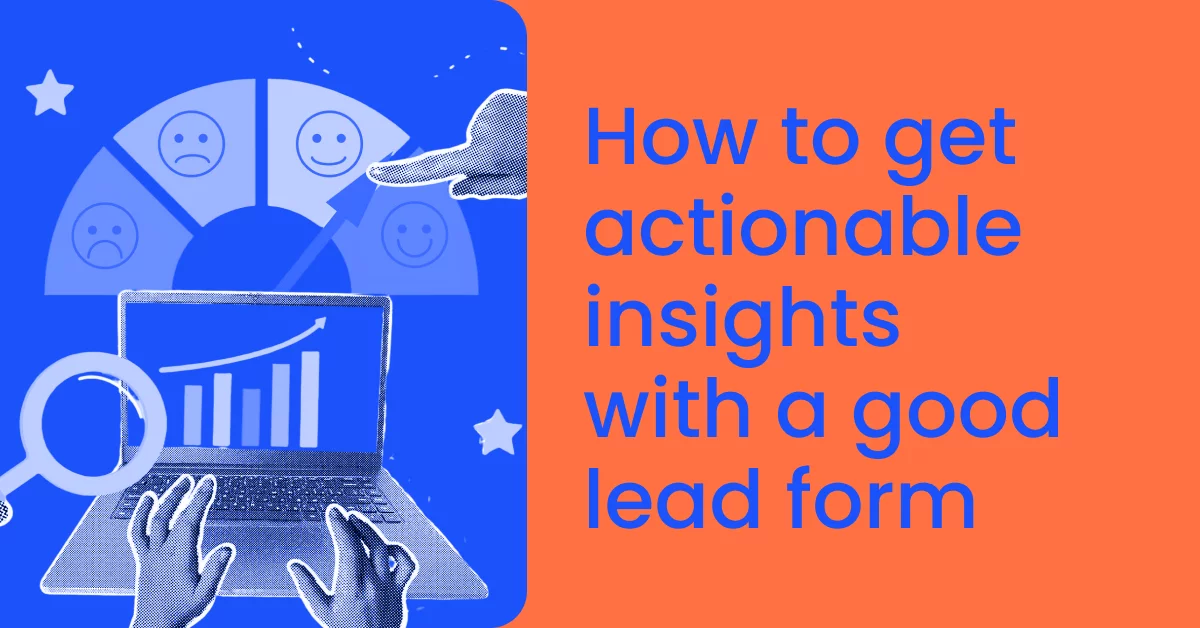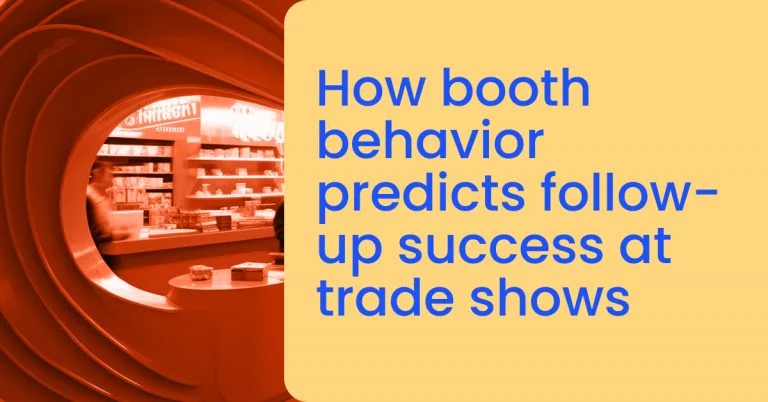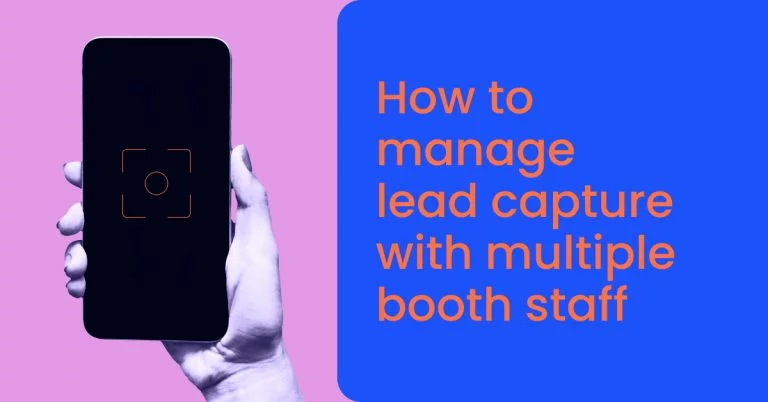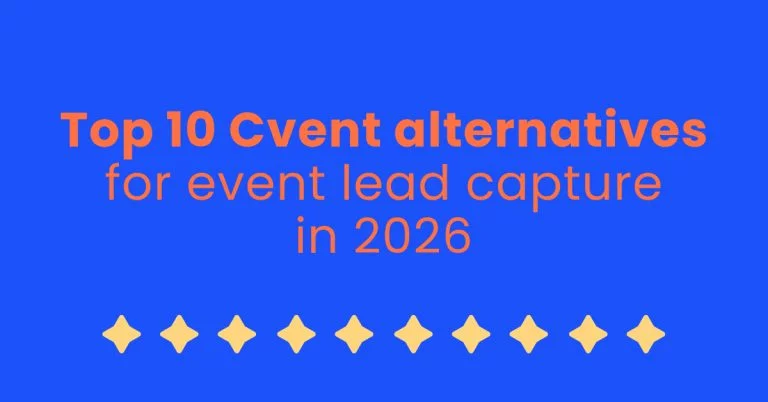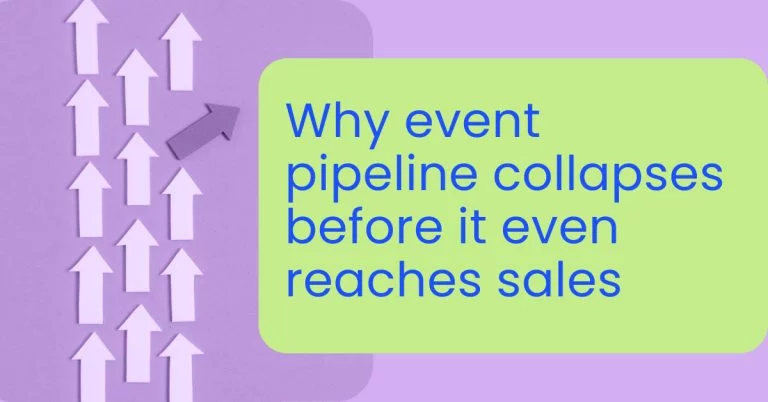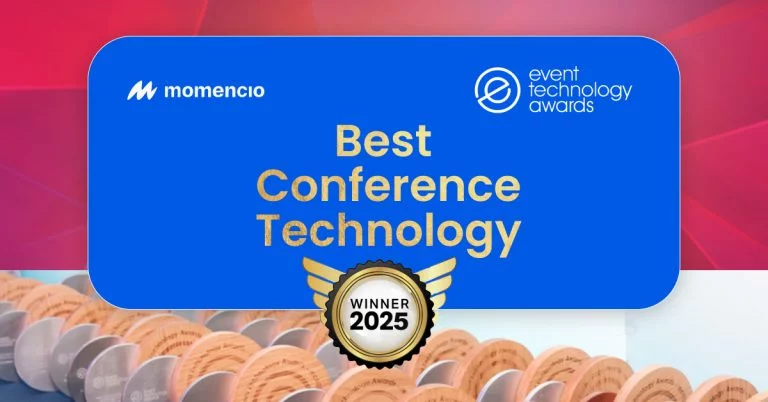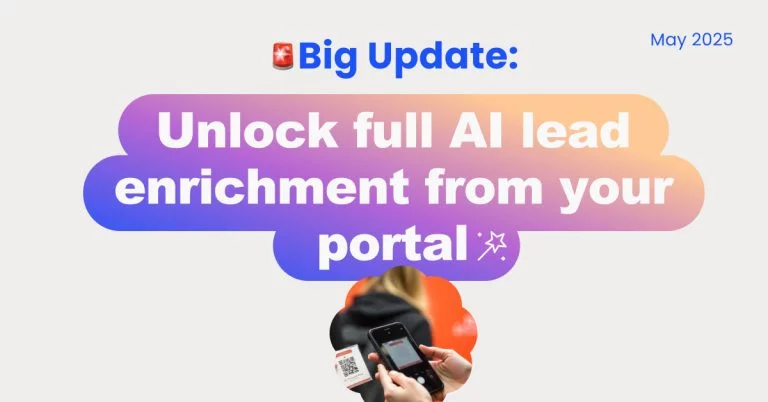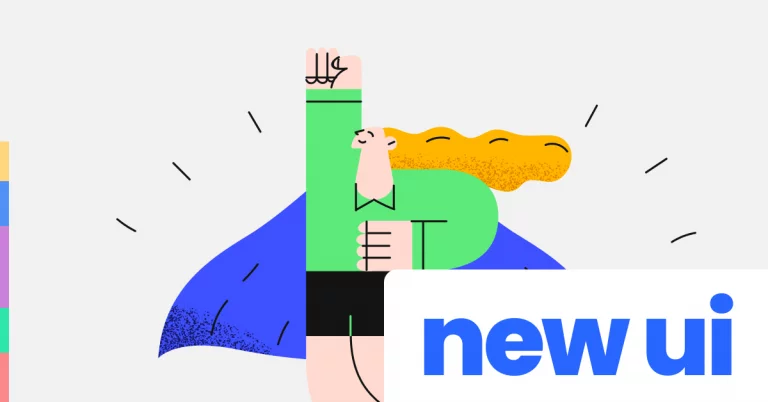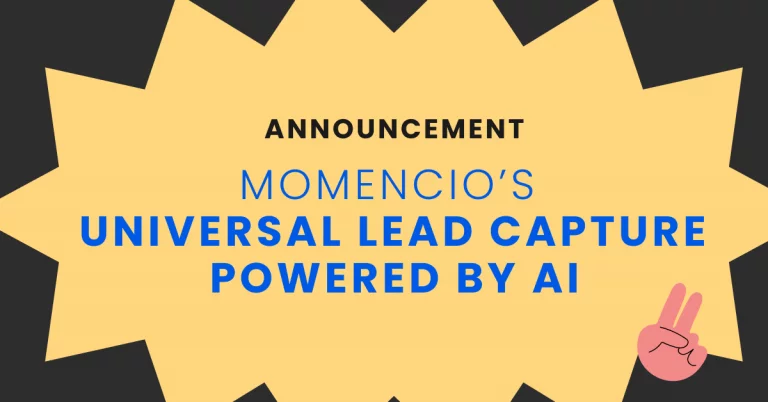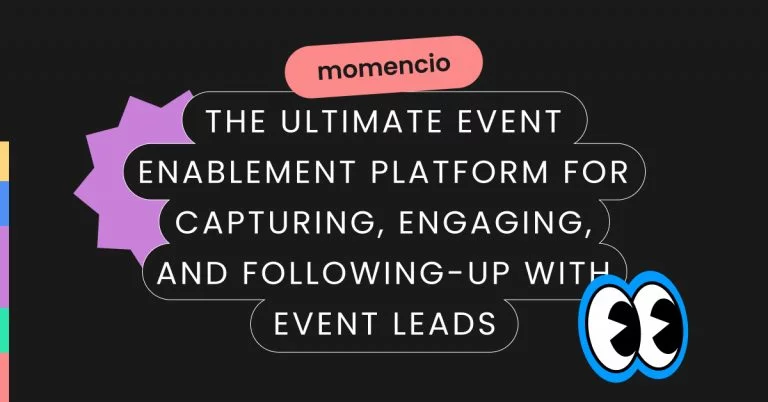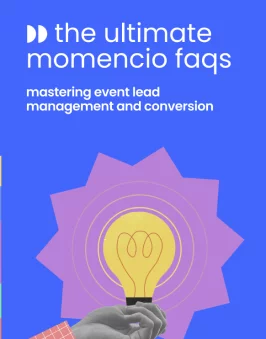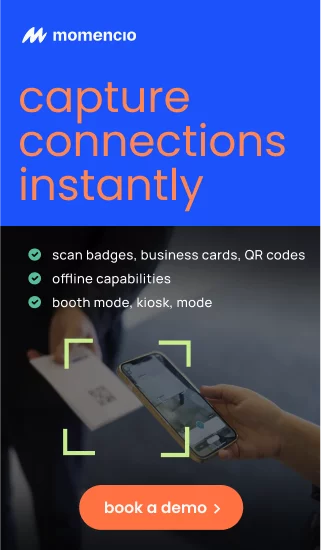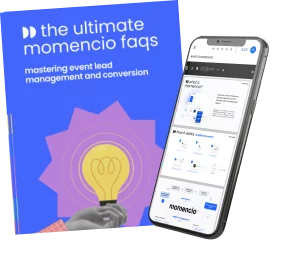Walk any trade show floor and you’ll see the same routine. Someone scans a badge, types a few details into a form, and moves on. Later, those forms get dumped into a CRM. Sales might skim them, but most of the information ends up sitting idle. The form did the collecting, but it did not create insight.
That happens because lead forms are usually designed for operations, not for the people on the ground. They focus on gathering as many details as possible, not on capturing what will help sales act quickly. For field marketers, that’s a problem. Their job isn’t just to return with a stack of names. Their job is to bring back intelligence — the kind that shows what a prospect cares about, how ready they are, and what the next step should be.
A good lead form is not about more fields. It is about the right fields, filled at the right time, in a way that preserves the context of the booth conversation. When designed well, it turns chaotic event interactions into clear signals for sales.
That’s the focus of this article: how to build lead forms that don’t just capture data but deliver actionable insights that actually move deals forward.
The hidden trap of “collect everything”
Most event teams fall into the same trap: they try to capture every possible detail in a single form. It feels safe. More fields should mean more insight, right? Wrong. In reality, the opposite happens.
Why long forms fail
Trade show conversations move quickly. You might have just two or three minutes with a prospect before they move on. A 20-field form can’t keep up with that pace. Booth staff get overwhelmed, visitors lose patience, and details are rushed or skipped. Instead of clean data, you end up with incomplete or inaccurate entries.
More data does not equate to better insight
Not every detail helps sales. Many companies load their forms with fields like:
- Secondary phone number
- Office location
- Number of employees in the division
- Annual revenue guesswork
These details may help with demographic reporting later, but for field marketers, they don’t drive immediate action. They don’t tell sales what matters most: what the prospect cares about and what should happen next.
The hidden cost of clutter
When sales opens a lead list filled with half-baked or irrelevant data, trust erodes. The assumption becomes “event leads aren’t strong” — not because the leads are weak, but because the form failed to capture useful intelligence. This breakdown makes the entire event look like a bad investment.
The rule of discipline
A good lead form is focused. Every field should answer one test question:
Will this help sales act faster or smarter?
If the answer is no. That field does not belong on the form. Trimming away the noise is the first step to building a lead form that delivers clarity instead of clutter.
What actionable insight really means
Most marketers confuse information with insight. A name, job title, and company name are information. They tell you who someone is, but they don’t tell you what to do next. An actionable insight is different. It’s a signal that points sales toward the right next step.
Information vs. insight
Here’s the difference in simple terms:
- Information: “John Smith, VP of Marketing, Acme Corp.”
- Insight: “John is evaluating event tech tools this quarter and asked if we integrate with HubSpot.”
The first version is a record. The second version is a direction. It gives sales context, urgency, and a reason to prioritize John over a dozen other names in the system.
What counts as actionable
For field marketers, actionable insight usually shows up in four forms:
- Interest tags – Did the person show interest in a specific product, feature, or solution?
- Urgency signals – Did they mention a timeline like “this quarter” or “next budget cycle”?
- Buying cues – Did they talk about competitors, budget, or current challenges?
- Next-step hints – Did they ask for a demo, a brochure, or an introduction to a colleague?
These small cues are far more valuable than a long list of generic details. They are the breadcrumbs that lead sales toward the fastest path to revenue.
Why this matters for sales
Sales teams don’t struggle because they lack data. They struggle because they don’t know where to start. If every lead looks the same, they will default to chasing easy wins or ignoring the list altogether. A good lead form solves this problem by separating signal from noise. It tells sales not just who the person is but why they matter and what to do next.
The field marketer’s edge
Only a field marketer can capture these insights in the moment. No enrichment tool, no LinkedIn scraper, and no business card scan can record the tone of a conversation, the urgency of a problem, or the competitor’s name casually dropped in a booth chat. This is the advantage of being on the ground. A good lead form doesn’t just record; it preserves that edge and transfers it directly to sales.
The role of timing in filling a form
Capturing the right details is one part of the puzzle. Capturing them at the right time is just as important. The longer you wait to fill out a lead form, the more context you lose.
Fresh memory beats delayed recall
A booth conversation is fast, and you might talk to dozens of people in a single afternoon. If you wait until the evening to complete forms, you will forget the small but critical details — the competitor name someone mentioned, the way they reacted to a demo, or the urgency in their tone. Those details fade quickly. The result is vague notes that don’t help sales.
Immediate capture = accurate capture
Filling the form during or immediately after the conversation locks in accuracy. It doesn’t need to be perfect or long. Even a few quick taps — tagging interest area, marking priority, adding one sentence of context — makes the information far more reliable than what you’ll recall later.
Why timing matters for sales
Sales doesn’t just care about what you captured. They care about whether that detail reflects reality. If every form entry feels like guesswork or generic notes, sales loses faith in the leads. But when they see clear, recent insights — “asked if we integrate with Salesforce” or “wants pricing this quarter” — they know they can act immediately. Timing is what preserves that reliability.
Practical workflow for field marketers
The key is to build forms that allow for fast, in-the-moment use:
- Pre-fill basics: Badge scans or business cards handle name, company, and email.
- Quick taps for interest: Dropdowns or checkboxes for product area or topic of interest.
- One short note field: A single box for capturing the “what really matters” line.
This design makes it possible to complete a form in less than 30 seconds, which is the sweet spot for capturing insights before moving on to the next booth visitor.
Must-have fields for field marketers
Most lead forms are written as if the marketer has endless time, a quiet desk, and a keyboard. That’s not the reality of a trade show floor. Field marketers are juggling demos, conversations, and follow-ups in real time. The form has to match that environment. Here’s what actually earns its place.
Context capture, not just contact capture
Yes, you need a name, company, and email. But the real field marketer advantage is in capturing the context of the booth interaction. Was the visitor rushing? Were they curious? Did they stop because of a specific demo? These moments can be lost if the form doesn’t invite a quick note on the why behind the visit. Without that, sales only gets half the picture.
Signals of intent
Instead of twenty demographic fields, focus on a handful of intent signals. Examples that actually help sales:
- What problem did the visitor mention first?
- Did they ask about timelines?
- Did they compare us to another vendor?
Each of these is a stronger predictor of sales readiness than “number of employees” or “HQ location.”
Fast qualifiers
Field marketers don’t need to do full qualification — but they can tag a lead in ways that change how sales approaches them. For example:
- Hot: asked for demo, urgent need, or budget discussion.
- Warm: showed interest, asked smart questions, but no urgency yet.
- Cold: general curiosity, casual chat, no sign of buying soon.
This doesn’t slow down the booth staff, but it saves sales days of wasted time.
Action pointer
Every form should capture the “what’s next.” Did the person want a brochure? A call next week? An invite to another event? Capturing that specific pointer is how field marketers make sure sales never starts cold.
The “flow” matters more than the form
Even if you have the right fields, a form can still fail if the flow is wrong. Field marketers know this better than anyone — conversations at a booth don’t follow a rigid script, so your form shouldn’t either.
Match the rhythm of real conversations
Most forms are designed like a survey: name at the top, company, title, then a laundry list of fields. But in real life, conversations rarely begin that way. A visitor might start by asking about a feature, or by mentioning a pain point. If your form forces staff to scroll through irrelevant fields first, they’ll either skip the important notes or never capture them at all.
The principle of progressive capture
Think about flow in three steps:
- Easy wins first – basics like name and role can be pulled in by a badge scan or filled in at the start.
- Context in the middle – this is where the intent signals and notes belong, right after the conversation.
- Action last – next steps and priority tagging should close it out, when you know how serious the prospect is.
This sequence mirrors how booth talks actually unfold: who they are, what they care about, and what should happen next.
Keep it fast and forgiving
Booth staff aren’t data entry clerks. They’re multitasking in a noisy space. The form should support quick taps, dropdowns, or checkboxes for structure, plus a single free-text box for color. If someone only has 20 seconds, they should still be able to lock in the most valuable cues without breaking the flow of the conversation.
Why flow matters more than fields
A clunky form design leads to shortcuts — skipped questions, random notes, or fake data just to get through the process. A good flow, on the other hand, makes the form feel like a natural extension of the booth interaction. It reduces resistance and increases accuracy, which is what sales cares about most.
Connect the form to the bigger loop
A well-structured lead form is only the first step. If it lives in isolation, it becomes just another data entry exercise. The real value shows up when the form is connected to the larger system — the loop that moves leads from event floor to sales pipeline.
Why the loop matters
Think of the form as the ignition switch. It sparks the process, but the engine only runs when everything else is wired together. A form that captures great insights but never connects to sales tools, personalized follow-up, or lead scoring ends up wasted. For field marketers, that means all the effort of capturing context still leads to dead ends.
The loop in action
Here’s what a complete loop looks like when it works:
- Form capture at the booth – contact basics, context notes, intent signals, and next steps.
- Microsite follow-up – instead of a generic thank-you email, the lead receives a personalized microsite with content tailored to their interests (captured in the form).
- Sales nudges – as the lead interacts with that microsite, sales gets alerts. If they download a case study or watch a video, the rep knows immediately.
- CRM visibility – everything captured in the form and tracked afterward flows into the CRM, so the sales team isn’t chasing leads blind.
What happens without the loop
When the loop is broken, the form becomes a dead file. Sales opens it days later, finds vague notes, and either ignores the lead or sends a generic follow-up. The connection to the original booth interaction is lost, and so is the chance to convert.
Why field marketers should care
You’re not just filling out forms for admin purposes. You’re feeding the system that makes your event investment worth it. If the form ties into the bigger loop, your insights drive real action: tailored content, faster follow-ups, and more closed deals. Without that connection, you’re just adding names to a list.
Turn event conversations into actionable insights with momencio
Everything we’ve covered so far points to one truth: the value of a lead form lies not in how much it collects, but in how much it enables.
Field marketers aren’t just gathering names—they’re capturing context, intent, and timing. When those facets are lost, leads become lifeless. But when your form is trimmed to capture what matters most, and timed with real conversations, you arm your sales team with insight, not just data.
This is exactly where momencio steps in—and why it matters:
AI EdgeCapture
momencio’s AI EdgeCapture™ instantly enriches the scanned badges, business cards, or name tags with verified contact details, job titles, LinkedIn profiles, and more. It works without event-specific APIs, meaning you can capture smarter, anywhere—without extra cost or complexity.
LiveMicrosites
Instead of a one-size-fits-all follow-up, momencio builds a LiveMicrosite™ for each lead—automatically creating a dynamic landing page with personalized greetings, content modules, and real-time engagement tracking. It’s tailored, flexible, and trackable—the perfect post-booth bridge.
Intellistream
Every interaction gets scored and tracked on momencio’s dashboards. You can see, right away, who’s engaged with the microsite or content, who clicked what, and who’s ready for a nudge with Intellistream. And because it integrates with CRMs like Salesforce or HubSpot, there’s no delay in delivering leads where they need to go.
Smart notes, presentations, and gamification—to amplify interaction.
Booth staff can capture fast, meaningful context with speech-to-text Smart Notes, tag intent, and even present interactive content from a central digital library. Add in gamification—surveys, quizzes, challenges—and you’re not just capturing leads, you’re creating experiences that stick.
Most event teams walk away with lists. With momencio, you walk away with intelligence. Capture leads instantly with AI EdgeCapture™, enrich them automatically, and follow up with LiveMicrosites™ that track every click. Don’t just collect. Convert.
👉 Book a demo with momencio and see how your next event can fuel your pipeline with actionable insights.
